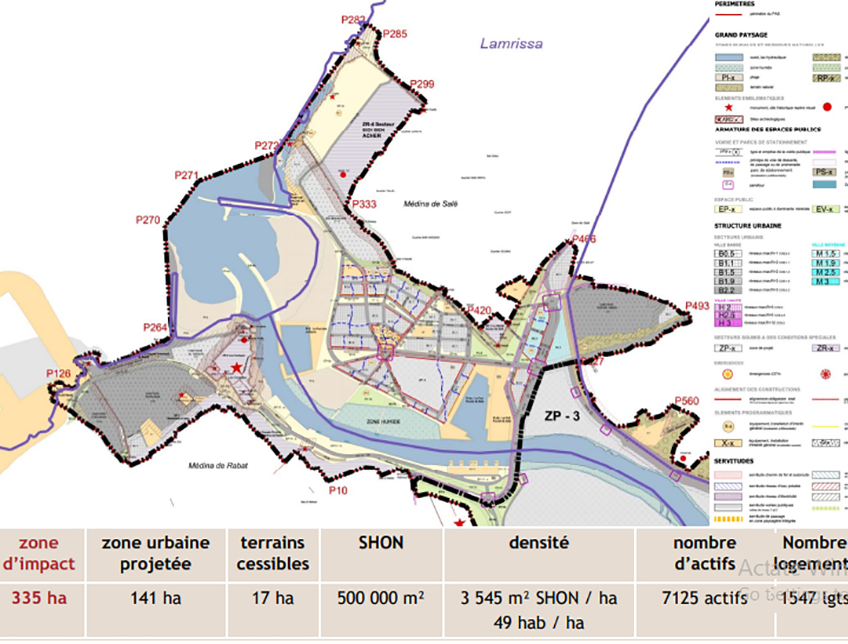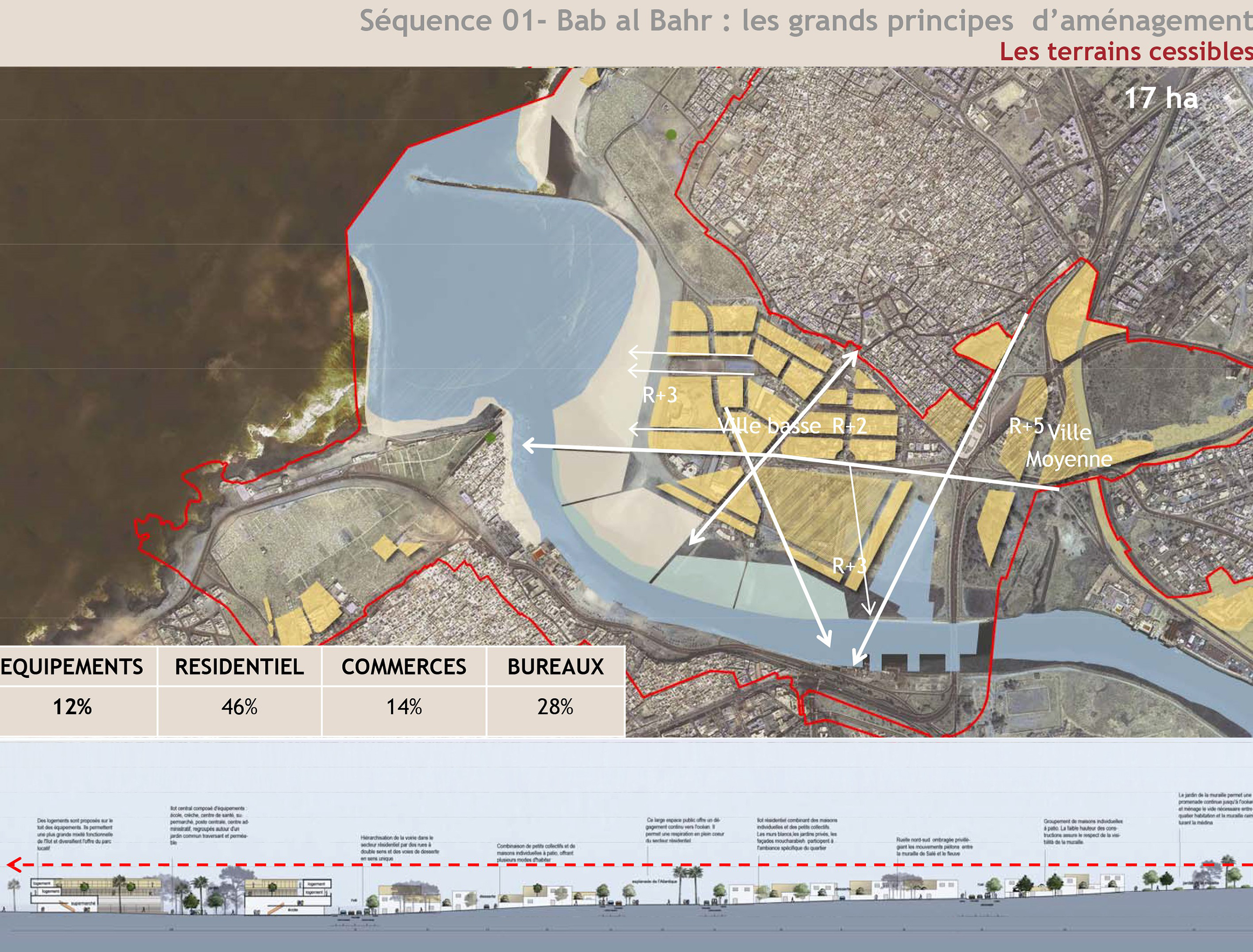
Close

Approach Words: Integrated City, Sustainability, Urban Livability
Public Policy Instruments: Financial Mechanism, Organization, Physical Intervention, Planning, Regulatory
Bab Al Bahr project is an extensive mixed-use urban development located on the waterfront of the Bouregreg River between Rabat and Salé,1 Morocco. The Bab Al Bahr project is one of the six zones within the Bouregreg Valley Development Plan (PAS)i and represents the initial development phase for this comprehensive project.2 The project aims to establish a self-sufficient seaside city, creating a direct link with the historic cities and beaches of Rabat and Salé.3 It seeks to become “the center of entertainment and leisure for the residents of both cities, as well as a significant attraction for tourists.”4 Bab Al Bahr features diverse facilities and public spaces that benefit neighboring districts and the entire Rabat-Salé metropolitan area.5

Title: Bab El Bahr project location within the Bouregreg Valley Development Plan (PAS).
Source: Click Here

Title: Detailed Master Plan for Zone 1 “Bab El Bahr” of PAS.
Source: Click Here

Title: Distribution of Uses Across the Designated Built Area in Bab Al Bahr Project (Zone1).
Source: Click Here

Title: The Implemented Residential Zone of Bab Al Bahr.
Source: Click Here
To implement the objectives mentioned above, a detailed master plan was developed for Zone 1, covering 1.14 square kilometers of urban area6 located at the estuary in front of the Moulay al Hassan bridge. The plan designates 0.56 square kilometers of floor space7 for a mixed real estate program, encompassing a harmonious mix of functions:
The project is divided into six distinct neighborhoods, each with its own character:18

Owner/Developer (Public)

Owner/Developer


The project will benefit from the construction of a tunnel along the Oudayas and Souk el Ghzel Square, in addition to the restructuring of the river crossing and the construction of the new Moulay Hassan Bridge featuring six lanes, a tramway line, and routes for pedestrians and two-wheel transport.25 The project aims to integrate with the local landscape, contributing to enhancing and developing Morocco’s socio-economic and cultural activity.26 The project construction seeks, therefore, to respect the architecture of the three old Medinas that surround it, namely the Oudayas, the old Medina of Rabat, and that of Salé.
The Bab Al Bahr project was initiated in 2006 by the Bouregreg Valley Development Agency (AAVB) in partnership with Al-Maabar Holding Company, a real estate development company from Abu Dhabi.27 28 The design of the Bab Bahir Zone was led by the English architectural firm Foster & Partners in collaboration with Confluences Group and Créarchi.29
The overall cost of this zone is estimated at $750 million,30 funded by The Hassan II Fund for Economic & Social Development, along with the Regie de distribution d’Eau & d’Electricite de Rabat-Sale (Redal) and the private sector.31
The implementation of phase 1 of the project began in 2009 and primarily consisted of residential buildings,32 with 60% completed by 2014.33 This phase also included infrastructure work essential for connecting Baba Al Bahr with its surroundings, such as the tram linking Rabat and Salé, which cost over $235 million, the Oudayas tunnel and the Moulay al-Hassan bridge.34 The project’s second phase, which includes the City of Arts and Crafts,35 was implemented between 2014 and 2017.36
Project Link
https://www.bouregreg.com/?lang=en
Endnotes
References